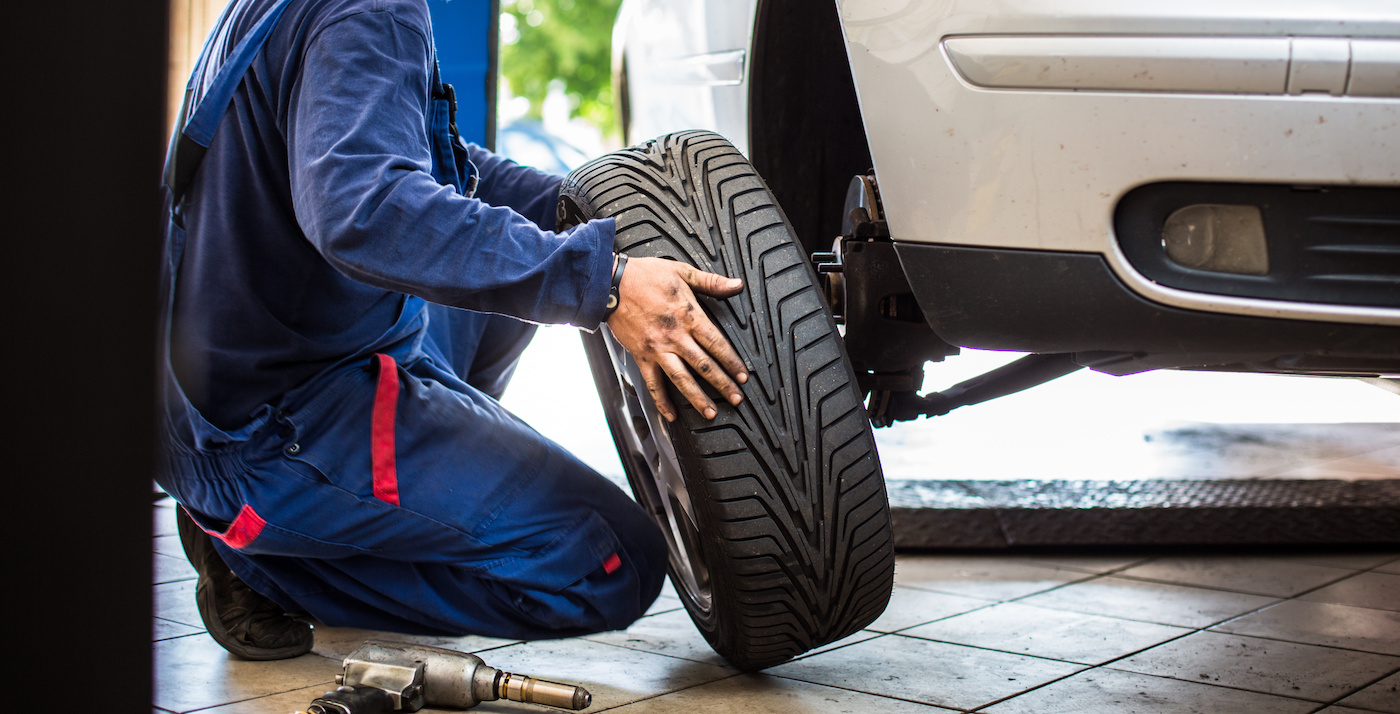
Tire maintenance can slip to the back of your mind when you have job sites to get to or are in a rush. In these moments, tire maintenance may seem like an annoying task, but it is important to keep in mind that it is key to keeping fleet vehicles—and your drivers—safe.
How much can tires actually affect safety? Quite a bit. According to the National Highway Traffic Safety Administration (NHTSA), on average 11,000 tire-related crashes each year could have been prevented with proper tire care. Also, vehicles with under-inflated tires are three times more likely to be in an accident linked to tire problems than vehicles with properly inflated tires. Not to mention that tires with low pressure are more likely to hydroplane in wet conditions.
Proper tire maintenance not only increases vehicle safety but can also improve fuel economy and extend tire life by 4,700 miles—saving your fleet money.
So how can you keep your tires well-maintained?
In this post: 1. Maintain correct tire pressure 2. Check the tire tread 3. Check tire wear and rotate tires 4. Maintain proper wheel alignment 5. Additional tips
1. Maintain correct tire pressure
Tire pressure affects a vehicle’s braking and handling as well as its response to a driver’s inputs. Severely low tire pressure can lead to heat buildup and premature failure.
Optimal air pressure levels vary among vehicles but are important to regularly check and maintain. Tires lose about one pound per square inch (psi) of pressure per month. They lose one additional psi for every 10-degree drop (Fahrenheit) in outside temperature.
Standard practice is to check tire pressure monthly including the spare, since unused tires still lose pressure over time. Since low tire pressure isn’t visibly noticeable until a tire reaches 50 percent optimal pressure, it is never sufficient to add air only when a tire looks low.
Tires with little to no tread—two-thirty-seconds of an inch (2/32”) to be exact—are called bald tires. Bald tires are a safety risk particularly in wet weather because vehicles have reduced braking abilities and increased likelihoods of hydroplaning.
Tires are required by law in most states to be replaced when the tread reaches this threshold of 2/32”. It is often recommended, however, to replace tires earlier when the tread reaches four-thirty-seconds of an inch (4/32”).
Tire tread should be checked periodically with greater frequency—or even replaced— when the tread reaches 4/32”. Drivers can check for wear on their tires by either feeling if the tread is flush with the wear bars or completing the penny or quarter test. The penny test verifies if the tread is at least 2/32” and the quarter test checks if the tread is at least 4/32”.
3. Check tire wear and rotate tires
When tires are not rotated adequately, portions will lose their tread quickly and reduce the safety of the vehicle. As a result, the vehicle has reduced braking capabilities and increased risk of hydroplaning.
Tires at the front of vehicles do not experience the same loads, steering or braking functions as tires at the rear. As a result, tires wear unevenly and at different paces. For example, front tires tend to have more wear on the outside edges since they are more involved with steering.
Tires must be rotated every 5,000 to 7,000 miles otherwise portions will lose their tread much quicker and have to be replaced potentially thousands of miles sooner. If tires are not properly rotated, this can greatly affect fleet budgets and reduce vehicle safety.
4. Maintain proper wheel alignment
Fleet vehicles are misaligned when the tire positions are outside the specifications of the manufacturer. Misaligned wheels can affect how a vehicle brakes and responds to a driver. While driving at high speeds, misaligned tires can increase difficulty in steering resulting in greater likelihood of an accident.
In addition to posing a safety risk, misaligned wheels can be costly because they place stress on a vehicle’s suspension—resulting in costly repairs and dragging tires—increasing fuel consumption.
There isn’t a standard for frequency of checking wheel alignment. It is recommended, however, to check wheel alignment when getting new tires—otherwise they could wear sooner. Signs of misaligned wheels include the vehicle pulling to a side while driving on a straight, level road, the steering wheel being off center while driving or the tires having uneven wear.
In addition to these maintenance checks, the NHTSA has the following tips for prolonging tire life and maintaining safe vehicles:
- Ensure valve caps are on tire valves
- Do not exceed the maximum load for a vehicle
- Avoid potholes or foreign objects on the road
- Do not run over curbs or strike curb when parking
- Avoid using old tires even if they are unused because they weaken with age
- Store unused tires in a clean, cool, dry and warm environment indoors
Tire maintenance is key for fleet vehicle safety. It is recommended that tire maintenance checks are completed monthly with more frequent inspections for fleets located in areas with particularly cold climates or that travel on roads with potholes and debris. It is best to inspect fleet vehicle tires before a long trip as well.



